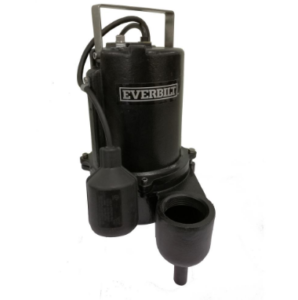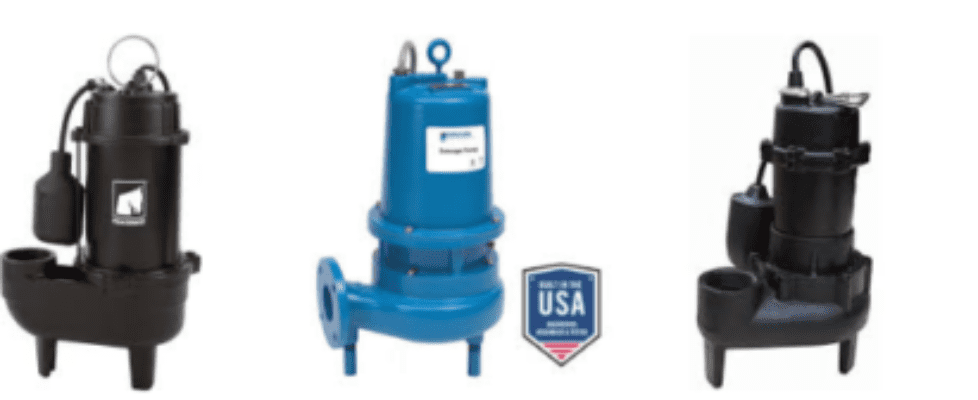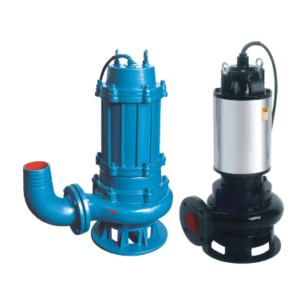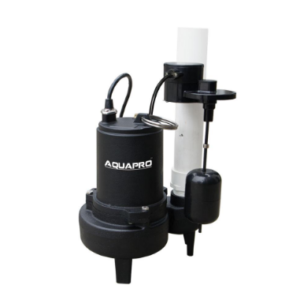How Does a Sewage Pump Work?
A sewage pump transfers sewage solids and liquids from one place to another. When it comes to residential, sewage composes of soft solids that have a diameter of up to 2 inches. The sewage is propelled from the sewage basin to a septic tank or a sewer system.
The sewage pump is set up at the lowest point of your sewage basin. The pump is usually submerged in most cases; therefore, the reason as to why it is referred to as submersible sewage pump. When it comes to sewage pump, it can be manual, dual mode or an automatic one.
The dual mode sewage pump has a piggyback plug; that allows your pump to either be a manual or an automatic pump. The manual pump bypasses the switch; it’s directly plugged into a socket. The automatic pump, on the other hand, is plugged in using the floating switch which works when you have the switch on.
It is recommended not to use the manual sewage pump in a sewage basin; this is because of sewage overflow. Sewage pumps involve centrifugal pumps, which enables solids to be able to pass through without having to cause clogging in the pump. The motor rotates the impeller when you turn on the pump; this creates pressure which pushes water up to the impeller to the discharge pipe.
The pump is powered up to 10 to 25 feet electric rod. The voltage can be from; 115, 230, 460 or 575 depending on the model. The pump house is built for long-term use as it’s made of cast iron; it has an impeller and a motor.
Types of sewage pump
-
Effluent pumps
These pumps are usually in a small on-site system. They pump effluent flowing out of the septic tanks. The effluent is a clear liquid; it has solid developing out of the septic tank. It’s able to pump more efficiently and higher levels when compare it to other sewage pumps. This is because; the sewage pump does not handle solid sewage waste.
-
Solid handling pumps
They are also known as sewage ejector pumps, they propel raw sewage. When it comes to raw sewage, it contains a lot of solids for most pumps to handle. As a result, this solid handling pump is ideal when it comes to handling raw sewage.
-
Grinder pumps
This pump is more like the solid handling pump; it is able to propel raw sewage. The grinder pump is different from the solid handling pump as it has rotating blades. The rotating blades are like the garbage grinders which grind and cut solids into smaller particles before pumping the sewage.
Benefits of sewage pumps

- Reduces the threat of mildew and molds. This happens due to the continual dampness of the inside of your basement due to stagnant pools, which contribute to the growth of mildew and molds. The molds and mildew pose health problems and damage your building material.
- Prevent damages due to flooding that is because of heavy rains, which triggers your basement to flood. With a sump pump, you can be able to avoid disasters that occur due to flooding in the basement.
- Reduces the risk of fire, water short-circuits appliances in your basement, for instance, the water heaters, heating system, and the laundry machines. Consequently, water is able to start a fire which is very dangerous and disastrous. With a sump pump, you can be able to keep water away from equipment that can cause fires in your house.
Maintenance and repairs of sewage pump.
- Removing the cover, there are three different types of lids which have different methods of removal.
- Installing a ground fault circuit interrupter in the electric panel or at the outlet. It’s important that you ensure it is working. Use the test button to ensure that there is proper ground-fault protection.
- Checking the drain line that is from the pump until the line meets the air gap, check for any signs of holes, leaks, damages or corrosion.
- Check the pit for debris or silt which can clog or obstruct the float discharge tube or pump impeller.
- Ensure that the air gap that is between the interior and exterior discharge pipes are clear and open from debris.
Conclusion
There is a lot of pumping station facilities, which includes pumps and equipment for pumping fluids. Sewage pumps are used for different infrastructure such as; removal of sewage to processing sites and supplying of water to canals. Sewage pumps are able to handle a lot of water in less time. It is also essential that you note that; it’s cost effective if you have a sewage pump to handle your wet waste and unwanted water.



